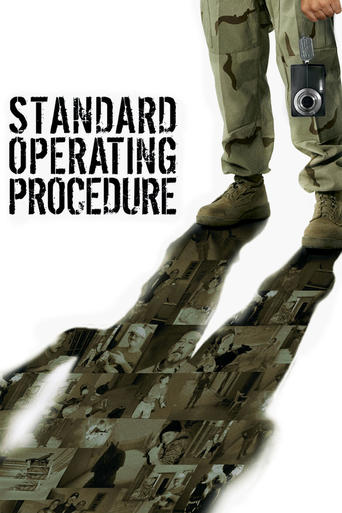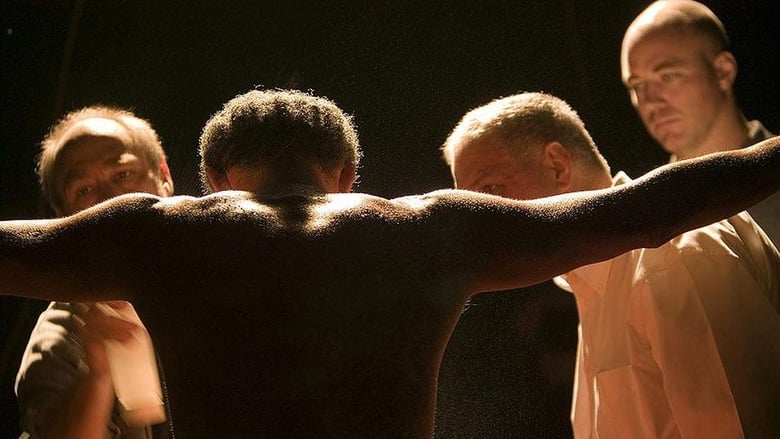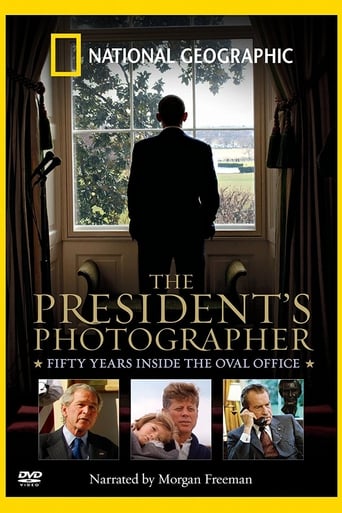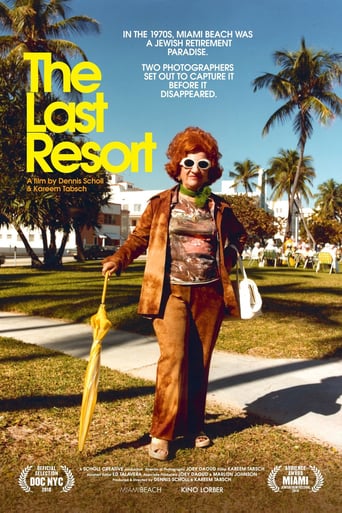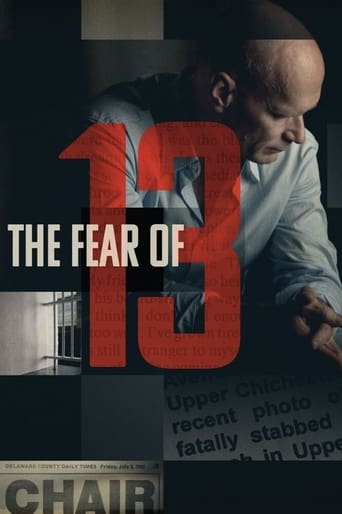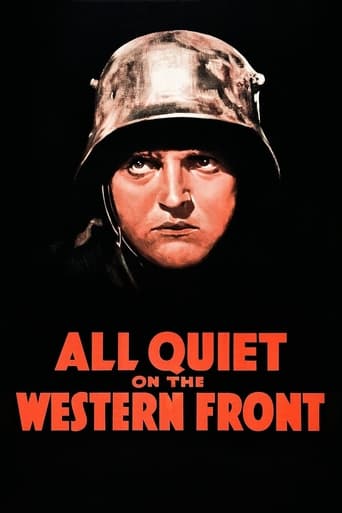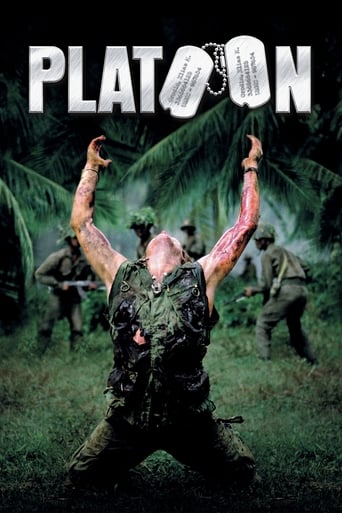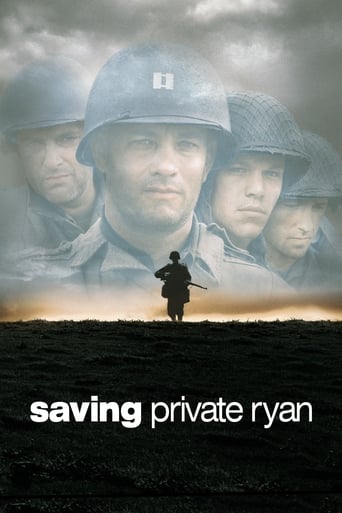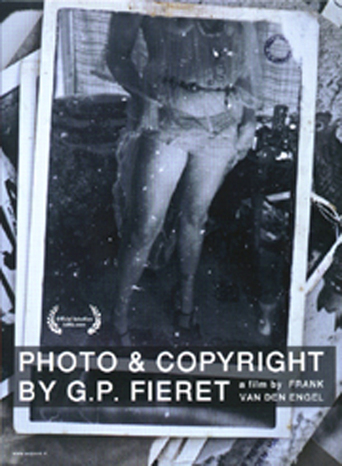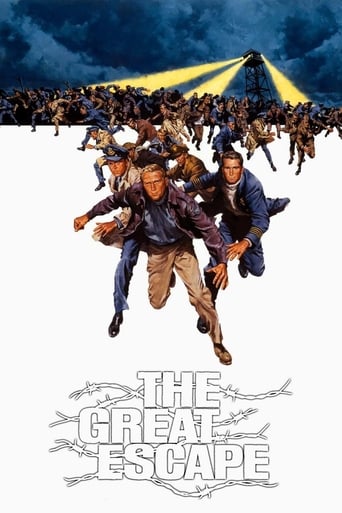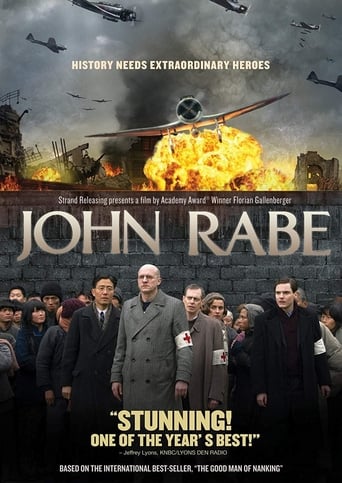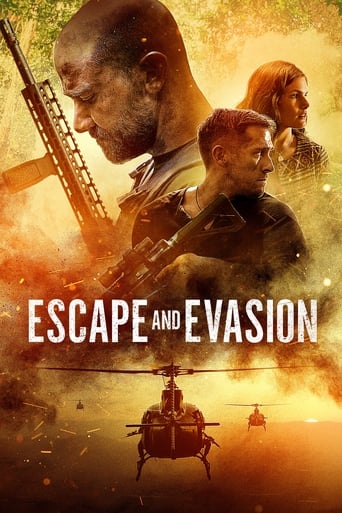Standard Operating Procedure (2008)
Errol Morris examines the incidents of abuse and torture of suspected terrorists at the hands of U.S. forces at the Abu Ghraib prison.
Watch Trailer
Cast


Similar titles
Reviews
Perfect cast and a good story
The thing I enjoyed most about the film is the fact that it doesn't shy away from being a super-sized-cliche;
A terrific literary drama and character piece that shows how the process of creating art can be seen differently by those doing it and those looking at it from the outside.
This is a gorgeous movie made by a gorgeous spirit.
When looking at almost any photograph it is natural to wonder about the back-story, about the context in which it was taken. I think that was the motivation for this documentary, based on the infamous photos taken in the Abu Ghraib prison in Iraq.While the investigations into the back-story of the photos out of Abu Ghraib reveal valuable insights into the horrors of that place, it is seen that extrapolating a back-story from a picture can often be misleading. For example, perhaps the most famous photo form Abu Ghraib of the guy standing on a box wearing a tattered shawl with wires dangling from his outstretched hands appears to have been staged primarily *for* the photo. He was provided the shawl since it was cold and shortly after the photos were taken the wires, which were never connected to any power source, were removed. Upon review by an investigator this procedure was viewed as "Standard Operating Procedure." What does a photo of a bloodstained floor say? Is it evidence of some horrible torture having taken place, or perhaps the blood of an insane man who was butting his head against a wall, or maybe the blood of a U.S. soldier who was shot by a prisoner using a smuggled gun? Lynndie England, the smiling young woman in so many of the photos, (like the one with her leading a prisoner on a leash) points out that the leash was slack and she was not dragging the guy and she was doing this to satisfy the desires of her lover. After seeing this film you might be more hesitant to draw conclusions based on certain photos. Of course most of the photos, such as the ones of the pyramids of nude prisoners, or the sequence of photos of the corpse of al-Jamadi, document atrocities that can hardly be explained away by any imaginable context, and such practices were indeed judged as criminal. Prison sentences were meted out to many of the soldiers involved. But the documentary makes it quite clear that only low-level soldiers were ever sentenced while it was evident that their antics were known and passed over by higher level people.I think the film succeeds in its narrow focus of trying to understand how the photos came to be and who was involved in taking them. The bulk of the documentary consists of interviews with the people most directly involved. Of course each of those people tried to put the best light on their behavior, with varying degrees of success. I felt the most successful person in this regard was Sabrina Harman whose letters home documented what she was experiencing at the time and indicated a sympathetic personality. The fact that she got sucked into this morass is disturbing. She said, "I don't know what else I could have done," and expressed regret for ever having joined the military. Director Morris lets his interviewees just talk without interjecting comments or questions. I was struck by the fact that none of them expressed any great regret or terrible guilt about what they had done, but maybe they were so traumatized by it that it was too soon for them to address that. Or maybe the environment they were operating in permitted them to rationalize that what they were doing was all right, and they have carried that attitude forward? Or maybe they were indeed uncaring jerks. But the film tries to convince you, and I think succeeds, that they were not monsters. Some of the interviewees do give evidence of having been stuck in a hell--being at the bottom of the food chain, bucking the system was not an easy option and going along with the accepted procedures was.What you seem to have had there was a bunch of young people who were in no way trained or equipped to handle what was happening. The real culprits were the interrogators who were doing the tortures and those who were establishing the procedures, and those people were not filmed. As was pointed out, if the Abu Ghraib photos had never come to light, nobody outside those involved would ever have known about this. Makes you nervous about how much we don't know.Most of the interviews are not continuous sequences but are pieced together from segments. This has he distracting effect of having the talking heads pop up at different locations on the screen during an interview. I am sure Morris could have minimized this, so I am puzzled by this decision. I have some qualms about the reenactments, but it is pretty clear what is real and what is staged. You may or may not find the ponderous musical score effective.This is a rare instance where I found the director's commentary track to be illuminating and well worth sitting through. Usually you just get things like, "It was cold the day when we shot this," or "We had to get up at 4 AM that day." Morris' commentary expands on the issues of the film and he tells what he was trying to accomplish in many of the scenes, and what he wanted to accomplish with the film in general. Also he points out things that you may have missed on first viewing. If Morris is to be believed, the tragedy of Abu Ghraib was that no valuable intelligence was extracted from any of the prisoners in this sorry affair. Saddam was apprehended by soldiers on the ground, not by intelligence.I came away from this with a different outlook than what I went in with. What more can you ask of a film?
I'm a proud American despite all the people going on vacation saying their Canadian. (grow up take some responsibility & know at least SOME of what's going on in the world huh? Unless your teenager because you are terribly self-centered and can't really help it, thanks hormones!) Anyway this is just another example of the 2 sides to a story and how the lowest rank are always the ones that take the fall. Nobody above a Staff Sargent was ever charged, that's non-commissioned officer's. Imagine that?! This is a very revealing portrait that shows just how screwed up the military can be in times of war & in general. The investigator made a couple outstanding points: 1. if there were never any pictures, we never would have heard of this. 2. The Colonels/Generals can be extremely intimidating to a young 18 year old just out of his parents house for the 1st time. Hell you don't have to have a High School education to get in the military anymore, so these kids don't really have an understanding that a hardened military man has who has seen everything. I don't care what anyone says, this is a pretty good look & is pretty fair in it's portrayal of everything & everyone involved. The people seemed to be puppets more than anything & the higher ranks KNEW what was happening. When people are going to learn that TORTURE DOESN'T WORK is beyond me. People will say anything under the right condition to get out of the pain they are being in. This is interesting documentary & maybe it will keep a few from getting involved in things that are beyond there comprehension or capability. I'm not a politician nor want to be, (they make me sick) but getting out of the war is going to be mess just like every other war & it is going to be a no-win issue no matter what we do which is really sad. Give this doc a try & try not be moved by the issues.
In 2004 the media was full of accounts of the abuse, torture, and even murder of prisoners in the Abu Ghraib prison by Military Police. Photographs surfaced depicting prisoners naked and wearing cloth hoods, and being forced to masturbate, stand on boxes for fear of electrocution, and forming human pyramids. Twelve soldiers were convicted, and the commanding officer at the prison, Brigadier General Janis Karpinski, was demoted to the rank of Colonel. Errol Morris' documentary Standard Operating Procedure attempts to examine the atmosphere surrounding the abuse, the people involved, and whether it was all down to a few "bad apples", or if it was reflective of the American military as a whole.Morris keeps his authorial influence to a minimum, instead allowing his subjects to speak for themselves. He has interviewed several of the soldiers involved, including Lynndie England, who can be seen in many of the photographs smiling, pointing, giving a thumbs up. She and the other soldiers interviewed describe, with remarkable candour, what it was like living in Abu Ghraib prison, their relationships with each other and the prisoners, and the events and tensions surrounding those incidents depicted in the photographs. It all paints a picture of the prison as a dark and stifling environment, one just waiting to bring out the worst in people.The real centrepiece of the film, though, are the photographs. Even four years after they dominated every front page and bulletin, they have lost none of their power to appal and disgust. Some, like the picture of a man forced to stand, arms outstretched, on a box with a cloth bag on his head, are surreal. Others, like a photograph of Sabrina Harman giving a thumbs up over a dead prisoner, are simply disturbing.And hovering above all of this are the OGA, or Other Government Agencies, an often used euphemism for the CIA. It was during the CIA-led interrogations that the most heinous of human rights infractions were most likely carried out. But there are no photographs of these incidents. Standard Operating Procedure raises the point that it is these individuals who should have received the full brunt of the punishment, but it was simpler to lay the blame on lower ranking officers like England and Harman.It is here that the main point of contention with Standard Operating Procedure arises. It is true that no one above the rank of Staff Sergeant was convicted. And it is true that this should not be the case, that those higher-ranking officers who let this abuse play out under their noses should be held accountable. But Morris tries to divert too much of the blame away from those who were convicted. While England, Harman and the others were just following orders and living in a deeply affecting environment, they are also human beings endowed with free will. They could have said no at any time, and just walked away.That Standard Operating Procedure raises these arguments means that it is worthy of our time. It presents the facts as perceived by those involved, never itself commenting or judging. It leaves that to us, so that we can make up our own minds. So that perhaps we can learn from the mistakes made by others, and prevent them from happening again.
Errol Morris's new documentary "Standard Operating Procedure" attempts to challenge the very medium of photography and bring to light the injustices at Abu Ghraib. The film somewhat succeeds in the first respect but fumbles its way through the second. Documentaries are inherently subjective and set out to portray a certain angle; that being said what Director Errol Morris says are his intentions and what appears on the screen are two totally different things. The film stumbles through the events at Abu Ghraib but fails to retain any real emotion, fluidity or energy throughout the work. Let's look at the good first. Errol Morris takes an interesting stance by constantly asking the viewers "What's outside the frame?" In a sense he's questioning the very medium he is using. This questioned is answered somewhat through testimonies but also quite literally by showing viewers photographs before they were cropped, such as the infamous leach photograph. Errol using some interesting techniques, most noticeably the use of the interotron. The interotron is a screen, similar to a TelePrompTer, that allows the interviewee to look directly into the camera, allowing for a more genuine first person feel to the film.However, for everything Errol Morris does right, there are a myriad of things done wrong here. While the cinematography of the film interviews via the interotron is interesting, the editing that pieces it together is awful. The film will cut different angles of the same person talking with gaps of black transition that last for almost two seconds. These pauses of black beg you to question "Is the film over?" which is always no. The film clocks in at 117 minutes, but it might as well be four hours long, because that's what it feels like. You can only watch people talk at you for so long. Morris attempts to spice up the picture by using grainy, melodramatic, slow motion sequences that serve little purpose other than to pad an already long film's running time and to flesh out images of his imagination in an attempt to sway the audience to his kind of thinking. Errol Morris has stated on several occasions that "Standard Operating Procedure" is not a political film. It sure feels like one. Morris paints himself as a detective, similarly to the way he did in "The Thin Blue Line", attempting to bring those truly responsible to justice. Those in the picture are responsible, but he wants to go after those higher up, who ordered the interrogation techniques and knew what was going on. The film merely graces that aspect, pointing a broad finger towards higher command and Bush administration. instead, the film indulges in the American atrocities committed at Abu Ghraib, while sympathizing with those who were jailed. Morris also blatantly hints towards the fact that every cell block in every prison in Iraq is performing this sort of torture to this degree. Why no photographs of any other cell block have not leaked, you can decide. "Standard Operating Procedure" is a failed documentary in that it attempts to be investigative but is so subjective in it's material that it just comes off as a fumbling clump of information. Nothing is truly resolved and more questions are asked than answered. It does give slightly more insight to the happenings at Abu Ghraib, but at almost two hours, S.O.P. is self aggrandizing and indulgent. Morris's political beliefs cloud his objectivity; the way he paints it, President Bush and Rumsfeld were fully aware from the beginning and actively trying to cover it up. Why would Morris take this approach? Because large government conspiracies are a whole lot more interesting than isolated incidents. In the end, there isn't a whole lot of reporting going on here as much as speculating.

